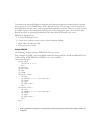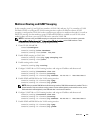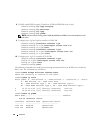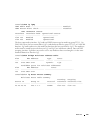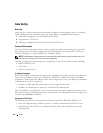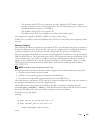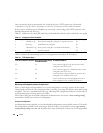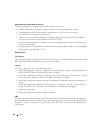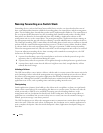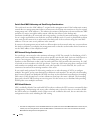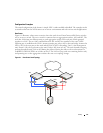
164 Utility
Once a hostname has been determined, the switch then issues a TFTP request for a file named
"<hostname>.cfg" file, where <hostname> is the first 32 characters of the switch's hostname.
If the switch is unable to map its IP address to a hostname, Auto Config sends TFTP requests for the
default configuration file "host.cfg."
Table 9-1 summarizes the config files which may be downloaded, and the order in which they are sought.
Table 9-1. Configuration File Possibilities
Table 9-2 displays the determining factors for issuing unicast or broadcast TFTP requests.
Table 9-2. TFTP Request Types
Monitoring and Completing the Auto Config Process
When a switch begins bootup and there is no saved configuration, a message appears on the console
informing the user that the Auto Config procedure is starting. A message also appears when Auto Config
completes. The user is reminded with a message indicating that configuration must be saved in order to
avoid performing Auto Config on the next reboot.
When Auto Config has successfully completed, an administrator can execute a show running-config
command to validate the contents of configuration.
Saving a Configuration
An administrator must explicitly save the downloaded configuration in non-volatile memory. This makes
the configuration available for the next reboot. In the CLI, this is performed by issuing copy running-
config startup-config command and should be done after validating the contents of saved configuration.
Order Sought File Name Description Final File Sought
1 <bootfile>.cfg Host-specific config file, ending in a *.cfg file extension Yes
2 fp-net.cfg Default network config file No
3 <hostname>.cfg Host-specific config file, associated with hostname Yes
4 host.cfg Default config file Yes
TFTP Server Address Available Host-specific Router Config
Filename Available
TFTP Request Method
Yes Yes Issue a unicast request for the host-specific router
config file to the TFTP server
Yes No Issue a unicast request for a default network or router
config file to the TFTP server
No Yes Issue a broadcast request for the host-specific router
config file to any available TFTP server
No No Issue a broadcast request for the default network or
router config file to any available TFTP server



